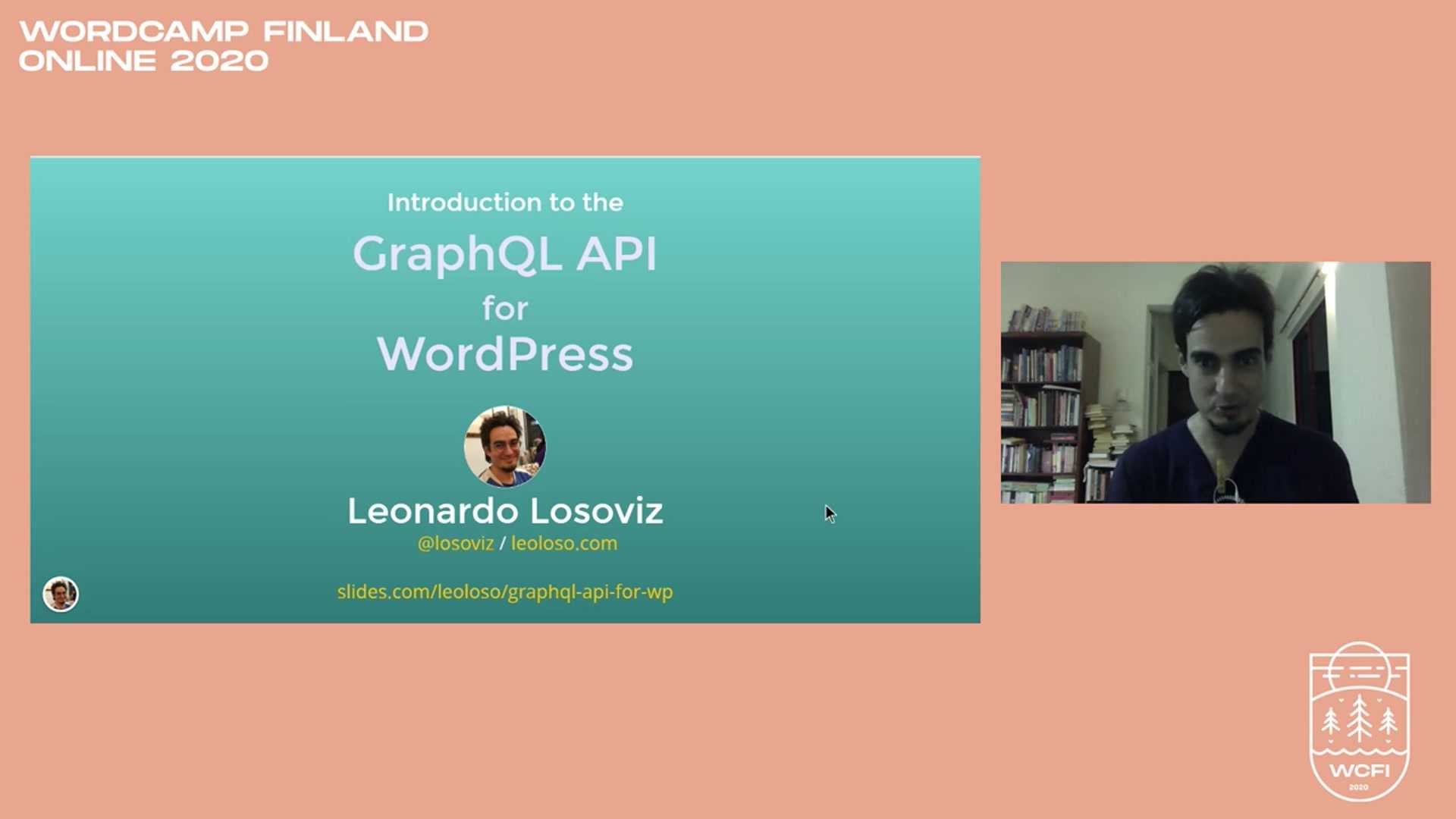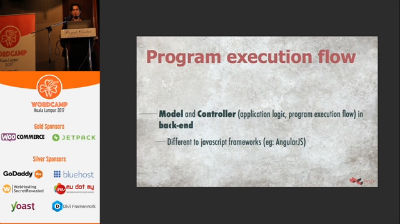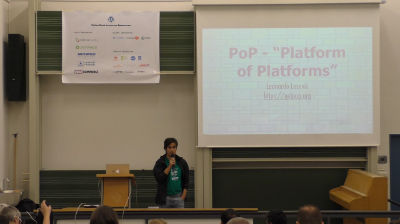Speakers: Leonardo Losoviz
-

15 things (you didn’t know) you can do with GraphQL in WordPress
WordCamp Malaysia 2023Speaker: Leonardo LosovizOctober 1, 2023 — You may already know that GraphQL can be used for building headless WordPress sites. But that’s just the tip of the iceberg.
GraphQL can be used for plenty of other things too, such as replacing the domain for site migrations, converting image URLs in the database when using a new CDN, sending emails when a comment is added, adding mandatory blocks to a new blog post, synchronizing content across sites, translating posts to another language, automating admin tasks, and more.
Join me to discover how GraphQL could be the single tool you need to interact with all of your WordPress data.
-

Leonardo Losoviz: Introduction to the GraphQL API for WordPress
WordCamp Finland (Suomi) 2020Speaker: Leonardo LosovizMarch 31, 2021 — Plugin author Leonardo Losoviz introduces his GraphQL API for WordPress plugin and its capabilities.
This talk explains some of the advantages over REST: no under/over fetching of data, visual clients to create the query and visualize the data, and other benefits.
-

Leonardo Losoviz: Intro to the GraphQL API for WordPress
WordCamp India 2021Speaker: Leonardo LosovizMarch 19, 2021 — Learn about different API solutions in WordPress, with an introduction to the GraphQL API plugin.
-

Leonardo Losoviz: “Create Once, Publish Everywhere” with WordPress
WordCamp Taipei 2019Speaker: Leonardo LosovizJune 16, 2020 — COPE (Create Once, Publish Everywhere) is a technique which allows to publish content across different platforms from a single source of truth, enabling to feed content to dissimilar platforms such as web, emails, or an iOS or Android app, while minimizing the amount of duplicated information and reducing maintenance to the minimum possible. Through Gutenberg, WordPress splits the post content into blocks which can be handled independently, thus enabling the implementation of the COPE strategy. This makes WordPress an ideal platform for hosting the content that will be distributed to different platforms. In this talk we will take a look into a WordPress-based architecture to implement COPE, and how it works.
-

Leonardo Losoviz: “Create Once, Publish Everywhere” with WordPress
WordCamp Kuala Lumpur 2019Speaker: Leonardo LosovizNovember 13, 2019 — Through Gutenberg, WordPress splits the post content into blocks which can be handled independently, thus enabling the implementation of the COPE strategy. This makes WordPress an ideal platform for hosting the content that will be distributed to different platforms. In this talk we will take a look into a WordPress-based architecture to implement COPE, and how it works.
-

Leonardo Losoviz: COPE with WordPress
WordCamp Singapore 2019Speaker: Leonardo LosovizAugust 26, 2019 — COPE (Create Once, Publish Everywhere) is a technique which allows to publish content across different platforms from a single source of truth, enabling to feed content to dissimilar platforms such as web, emails, or an iOS or Android app, while minimizing the amount of duplicated information and reducing maintenance to the minimum possible.
Through Gutenberg, WordPress splits the post content into blocks which can be handled independently, thus enabling the implementation of the COPE strategy. This makes WordPress an ideal platform for hosting the content that will be distributed to different platforms. In this talk we will take a look into a WordPress-based architecture to implement COPE, and how it works.
-

Leonardo Losoviz: How to Make a Decentralized WordPress Website
WordCamp Kuala Lumpur 2017Speaker: Leonardo LosovizJanuary 9, 2018 — PoP is a WordPress framework which aims to break the information monopoly of large Internet corporations by linking autonomous WordPress websites together, allowing them to interact with each other and become part of a wider network composed of different communities. Users from different websites can interact among themselves, without the need to join a centralized service. This way, website owners can keep control of their own data, storing it on their own servers.
We will explore the technical features of the framework, how it works, how to create a website with it and how to integrate it within an ecosystem. -

Leonardo Losoviz: How to Make a Decentralized WordPress Website
WordCamp Frankfurt 2016Speaker: Leonardo LosovizSeptember 10, 2016 — PoP – Platform of Platforms is a WordPress framework which aims to break the information monopoly of large Internet corporations by linking autonomous WordPress websites together, allowing them to interact with each other and become part of a wider network composed of different communities. Users from different websites can interact among themselves, without the need to join a centralized service such as Facebook or LinkedIn. This way, website owners can keep control of their own data, storing it on their own servers.
PoP works by combining WordPress and Handlebars into an MVC architecture framework, in which WordPress is the model/back-end, Handlebars templates are the view/front-end, and the PoP engine is the controller. Acting as the controller, PoP intercepts WordPress’ data query results, generates a response in JSON, and feeds this JSON code to Handlebars to be transformed into HTML.The PoP engine automatically provides the WordPress website of its own API, removing the need to implement additional server-side applications for providing data to third-party websites, mobile phone apps, etc. Because the API is known to all PoP websites, they can fetch data from each other in real time, allowing for decentralization of a website’s data sources, or aggregation of multiple websites’ data into a wider network.
Applications for a PoP network are multiple. For instance, it could enable an economy of micro-payments to take place, thus compensating anyone for their original material posted on the web. Each node on the network could decide to give its content for free to its aggregators, or charge a fee for it. The node could then use these proceedings to pay those users who contribute content to it.
